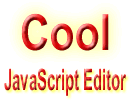Foreword to the First EditionThis book is an amazing measure of how far and how fast interactive shading has advanced. Not too many years ago, procedural shading was something done only in offline production rendering, creating some of the great results we all know from the movies, but were not anywhere close to interactive. Then a few research projects appeared, allowing a slightly modified but largely intact type of procedural shading to run in real time. Finally, in a rush, widely accessible commercial systems started to support shading. Today, we've come to the point where a real-time shading language developed by a cross-vendor group of OpenGL participants has achieved official designation as an OpenGL Architecture Review Board approved extension. This book, written by one of those most responsible for spearheading the development and acceptance of the OpenGL shading language, is your guide to that language and the extensions to OpenGL that let you use it. I came to my interest in procedural shading from a strange direction. In 1990, I started graduate school at the University of North Carolina in Chapel Hill because it seemed like a good place for someone whose primary interest was interactive 3D graphics. There, I started working on the Pixel-Planes project. This project had produced a new graphics machine with several interesting features beyond its performance at rendering large numbers of polygons per second. One feature in particular had an enormous impact on the research directions I've followed for the past 13 years. Pixel-Planes 5 had programmable pixel processorslots of them. Programming these processors was similar in many ways to the assembly-language fragment programs that have burst onto the graphics scene in the past few years. Programming them was exhilarating, yet also thoroughly exasperating. I was far from the only person to notice both the power and pain of writing low-level code to execute per-pixel. Another group within the Pixel-Planes team built an assembler for shading code to make it a little easier to write, although it was still both difficult to write a good shader and ever-so-rewarding once you had it working. The shaders produced will be familiar to anyone who has seen demos of any of the latest graphics products, and not surprisingly you'll find versions of many of them in this book: wood, clouds, brick, rock, reflective wavy water, and (of course) the Mandelbrot fractal set. The rewards and difficulties presented by Pixel-Planes 5 shaders guided many of the design decisions behind the next machine, PixelFlow. PixelFlow was designed and built by a university/industry partnership with industrial participation first by Division, then by Hewlett-Packard. The result was the first interactive system capable of running procedural shaders compiled from a high-level shading language. PixelFlow was demonstrated at the SIGGRAPH conference in 1997. For a few years thereafter, if you were fortunate enough to be at UNC-Chapel Hill, you could write procedural shaders and run them in real-time when no one else could. And, of course, the only way to see them in action was to go there. I left UNC for a shading project at SGI, with the hopes of providing a commercially supported shading language that could be used on more than just one machine at one site. Meanwhile, a shading language research project started up at Stanford, with some important results for shading on PC-level graphics hardware. PC graphics vendors across the board started to add low-level shading capabilities to their hardware. Soon, people everywhere could write shading code similar in many ways to that which had so inspired me on the Pixel Planes 5 machine. And, not surprisingly, soon people everywhere also knew that we were going to need a higher-level language for interactive shading. Research continues into the use, improvement, and abuse of these languages at my lab at University of Maryland, Baltimore County; and at many, many others. However, the mere existence of real-time high-level shading languages is no longer the subject of that research. Interactive shading languages have moved from the research phase to wide availability. There are a number of options for anyone wanting to develop an application using the shading capabilities of modern graphics hardware. The principal choices are Cg, HLSL, and the OpenGL Shading Language. The last of which has the distinction of being the only one that has been through a rigorous multivendor review process. I participated in that process, as did over two dozen representatives from a dozen companies and universities. This brings us back full circle to this book. If you are holding this book now, you are most likely interested in some of the same ideals that drove the creation of the OpenGL Shading Language, the desire for a cross-OS, cross-platform, robust and standardized shading language. You want to learn how to use all of that? Open up and start reading. Then get shading! Marc Olano
University of Maryland
Baltimore County, MD
September 2003
|
 Free JavaScript Editor
Ajax Editor
Free JavaScript Editor
Ajax Editor
 Ajax Editor
JavaScript Editor
Ajax Editor
JavaScript Editor